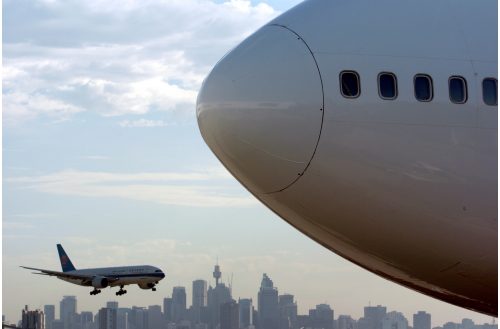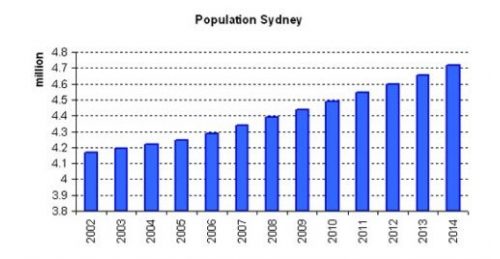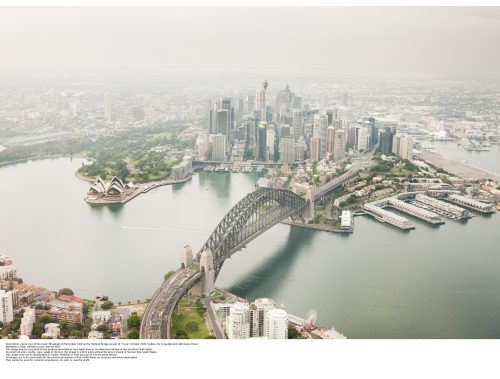Officially licensed in 1920, Sydney Airport proudly holds the record as the world's oldest international airport. Sydney Airport stands tall as the largest airport in the Southern Hemisphere with the highest yielding traffic in the country.
As of July 2010, we have recorded in excess of 34 million annual passengers, bringing us close to 100,000 travellers per day. We attract about half of Australia's international air traffic, making us currently the 25th busiest airport worldwide.
Four new carriers joined in 2009, V Australia, Air Austral, Delta Air Lines, and Tiger Airways. 2010 sees a continuation of strengthening capacity and traffic with more growth expected from NW10 with Cathay Pacific returning to four daily services, Singapore Airlines introducing a second A380 rotation and China Southern increasing to double daily services to Guangzhou.
Sydney Airport's has connections to 46 international airports around the world; we have more routes, more destinations, more airlines, and more frequencies than any other airport in Oceania.
Sydney Airport's greatest asset is its hometown, Australia's premier city. Feted for its glittering waterways, the iconic pull of its landmarks, and the vibrancy that comes from being the island continent's biggest and brightest city, Sydney is always ready for its close up.
Sydney Airport. Your first choice in Australasia.

CATCHMENT AREA:
- Australia has an approximate population of 22 million (July 2010).
- New South Wales, driver of Australia's economy and the continent's most populous state is home to 7.1 million people
- Sydney, Australia's only world city and it's economic centre has an approximate population of 4.3 million

MARKET:
Companies
- New South Wales (NSW) is Australia's largest State economy. In 2008 - 09, NSW's Gross State Product was valued at $402 billion or about 32 % of Australia's Gross Domestic Product (GDP).
- Sydney is the financial hub of Australia and represents almost 25% of Australia's GDP.
- NSW is a key economy in the Asia Pacific; in fact, the NSW economy is larger than each of the national economies of Hong Kong SAR, Thailand, Malaysia, Singapore, the Philippines and New Zealand
NSW has a diversified and knowledge intensive economy. In Australia, it accounts for:
- 46% of the Australia's finance and insurance industry
- 38% of the professional, scientific and technical services
- 42% of the information, media and telecommunications
- 32% of the manufacturing industry.
The NSW Government has triple-A credit ratings from both Moody's and Standard & Poor's, proof of the State's strong economic credentials. (15 June 2009)
In Australia NSW is home to:
- 81% of Asia Pacific finance and insurance regional offices
- 81% of the headquarters of Australia's domestic and foreign bank
- 73% of property and business services regional offices
- 60% of manufacturing regional headquarters
- 76% of all information and communications technologies (ICT) regional headquarters
- 43% of information and communications technology (ICT) businesses
- 75% of multinational pharmaceutical companies in
- The financial services workforce of Sydney is almost 45 % of the size of London and New York City's.
- Sydney and NSW offer an internationally competitive and compelling location for global companies to be based as they are home to the largest proportion of Asia Pacific regional headquarters in Australia, with Sydney the most cost effective office location, above Seoul, Mumbai, Tokyo, Hong Kong, London, New York, Paris and Singapore
Business competitiveness
- Business investment in NSW reached $53 billion in 2009 and more than a third of all Australia businesses choose to be in NSW.
- Big business chooses to be based in NSW, with 48 % of the top 500 companies by revenue in Australia based here.
- The wide variety of Asian languages spoken in Sydney and NSW has attracted international firms looking to establish regional hubs of customer service centres in the Asia Pacific.
TOURISM:
New South Wales
More than one-half of all international visitors to Australia visit NSW (i.e. 52%), which is the largest share of any State. NSW also gets the largest share of domestic visitors (34%).
Tourism is vital for the economy in NSW, especially in regional areas. The sector directly contributes around $13.9 billion to NSW' gross state product in 2007/08 and an additional $9.6 billion indirectly. The industry provides 162,500 direct jobs in NSW - about 4.8% of all jobs in the State
- NSW earns $23 billion a year from domestic and international tourism expenditure (YE December 09).
- Domestic overnight visitors stayed 77 million nights in NSW and spent $12.2 billion (YE December 09).
- Domestic day visitors spent $4.9 billion in NSW (YE December09).
- International visitors stayed over 61 million nights in NSW and spent $5.8 billion. (YE
- December 09).
- Every $1 million of tourist expenditure supports approximately seven tourism jobs.
Sydney
Sydney is well known as a city for extraordinary natural environment, distinctive architecture, rich history, friendly people, and lifestyle - all key elements of its identity. Together, these create a vibrant image that has universal appeal.
Sydney is a much-loved city, a tourist destination and often a host of world sporting events.
It also has a reputation as a global financial centre with a competitive business sector and is leader in creativity and innovation.
- Sydney earns $11.5 billion a year from domestic and international tourism expenditure (YE December 09).
- Domestic overnight visitors stayed 19.1 million nights in Sydney and spent $4.5 billion (YE December 09).
- Domestic day visitors in Sydney spent $1.8 billion (YE December 09).
- International visitors stayed 52.2 million nights in Sydney and spent $5.2 billion (YE December 09).
NETWORK:
Sydney Airport's complex, ever-growing network now spans the globe. With 46 international airports around the world, we have more routes, more destinations, and more airlines and more frequencies than any other airport in Oceania.
Sydney Airport connects to -
22 regional airports in New South Wales
47 domestic airports in Australia
46 international airports in the world
FACILITIES:
Sydney Airport has all the major infrastructure elements needed to operate a modern and efficient international airport and to accommodate the forecast growth in aviation activity. This includes-
- three runways - medium spaced parallel runways in the north-south (16/34)
- direction (3,962m and 2,438m) and an intersecting/cross runway in the eastwest (07/25) direction (2,530m)
- two terminal precincts - T1 (the International Terminal) in the north-west sector and T2 and T3 (the Domestic Terminals) in the north-east sector
- maintenance and hangar facilities - Qantas Jet Base
- navaids and communications systems
- freight handling facilities
- a General Aviation area
- all other necessary airport infrastructure.
Sydney Airport has completed the expansion and upgrade of the departures level of the International Terminal. New facilties include;
- expanded departures level which provides an extra 7,300 square metres of space
- a new outbound hall for the Australian Customs and Border Protection Service - closing two old halls
- a new security screening area to undertake essential aviation security measures - closing two old areas
- the new Forum to provide more waiting areas and food, beverage and retail outlets for passengers (after Customs)
- the new landside food court to provide passengers with greater range and more choice (before Customs)
UNSERVED ROUTES/KEY MARKET OPPORTUNITIES:
As of mid 2010
- Indian Subcontinent
- Lebanon
- Macau
- Japan
- Turkey
- Continental Europe
- Russia
- Brazil
CONTACT:
Head of Aviation Business Development
Sydney Airport Corporation Limited
+61 2 9667 9111
Visit the Sydney Airport Enhanced Profile to learn more about SYD or connect with the team.





